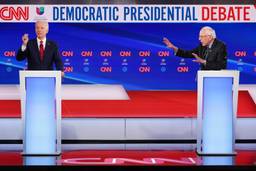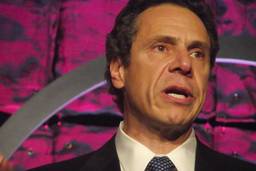As a progressive, I’m often asked if there is a real difference between progressivism and liberalism, or if progressivism is merely a nicer-sounding term for the less popular L-word.
It’s a fair question, considering that Democratic politicians regularly substitute “progressive” for “liberal” in news releases and speeches. Predictably, Republicans call their opponents’ linguistic shift a craven branding maneuver, and frankly, they’re right: Most Democrats make no distinction between the two words.
However, that doesn’t mean the ideologies are synonymous. In fact, if the last decade of economic policy proves anything, it is that even as the word “progressive” is now ubiquitous, a perverted form of liberalism has almost completely snuffed out genuine progressivism.
Some background: Economic liberalism has typically focused on using the government’s Treasury as a means to ends, whether those ends are better health care (Medicare/Medicaid), stronger job growth (tax credits) or more robust export businesses (corporate subsidies). The idea is that taxpayer dollars can help individuals afford bare necessities and entice institutions to support the common good.
Economic progressivism, by contrast, has historically trumpeted the government fiat as the best instrument of social change – think food safety, minimum wage and labor laws, and also post-Depression financial rules and enforcement agencies. Progressivism’s central theory is that government, as the nation’s supreme authority, can set parameters channeling capitalism’s profit motive into societal priorities – and preventing that profit motive from spinning out of control.
Looked at this way, liberalism and progressivism once operated in tandem. But regardless of which of the two economic ideologies you particularly favor (if either), three of the recent epoch’s most far-reaching initiatives make clear the former now dominates both parties.
It started in 2003 with Republicans’ Medicare drug benefit. Rather than go the progressive route – imposing price controls, permitting government to negotiate lower bulk prices or letting wholesalers buy drugs at cheaper foreign prices – the bill hinged on taxpayer money. Essentially, the government gave $1.2 trillion to the pharmaceutical industry in exchange for the industry providing medicines to seniors.
This became the bank bailout’s model. Instead of first responding to the Wall Street crisis with progressive, New Deal-style regulations, presidents Bush and Obama opted for liberal bribe theory: Specifically, they bet that giving banks trillions in loans, subsidies and guarantees would convince financial institutions to halt their riskiest behavior and start lending to small businesses again.
Now, it’s health care.
The Democratic bill began as a hybrid. On the liberal side, it proposed growing Medicaid and trading subsidies to insurance companies for expanded coverage. On the progressive side, the original legislation included measures like premium regulation and a government-run insurer to compete with private firms. But save for a few fairly weak consumer protections, the final bill was stripped of most major progressive provisions. Ultimately, the celebrated “reform” is based primarily on a liberal wager that Medicaid plus subsidies will equal universal health care.
Which, for a short time, may be the case.
The trouble, though, is what The Washington Post reports: “The (subsidies’) buying power could erode over time in an era of rapid medical inflation.”
There, of course, is the rub.
Liberalism sans progressivism – i.e., public money sans regulation – turns the Treasury into an unlimited gift card for whichever private interests are being sponsored.
In this era of corporate-tethered lawmakers, such public-to-private transfers often face less congressional opposition than progressivism’s inherent confrontations. But the inevitable result is taxpayers being bilked, as subsidized industries freely raise prices and continue engaging in destructive behavior, knowing government and/or captive consumers will keep financing the binge.
So to answer the question – is there a difference between liberalism and progressivism? Yes – and without both, we end up paying a steep price.
David Sirota is an award-winning investigative journalist and an In These Times senior editor. He served as speechwriter for Bernie Sanders’ 2020 campaign. Follow him on Twitter @davidsirota.








